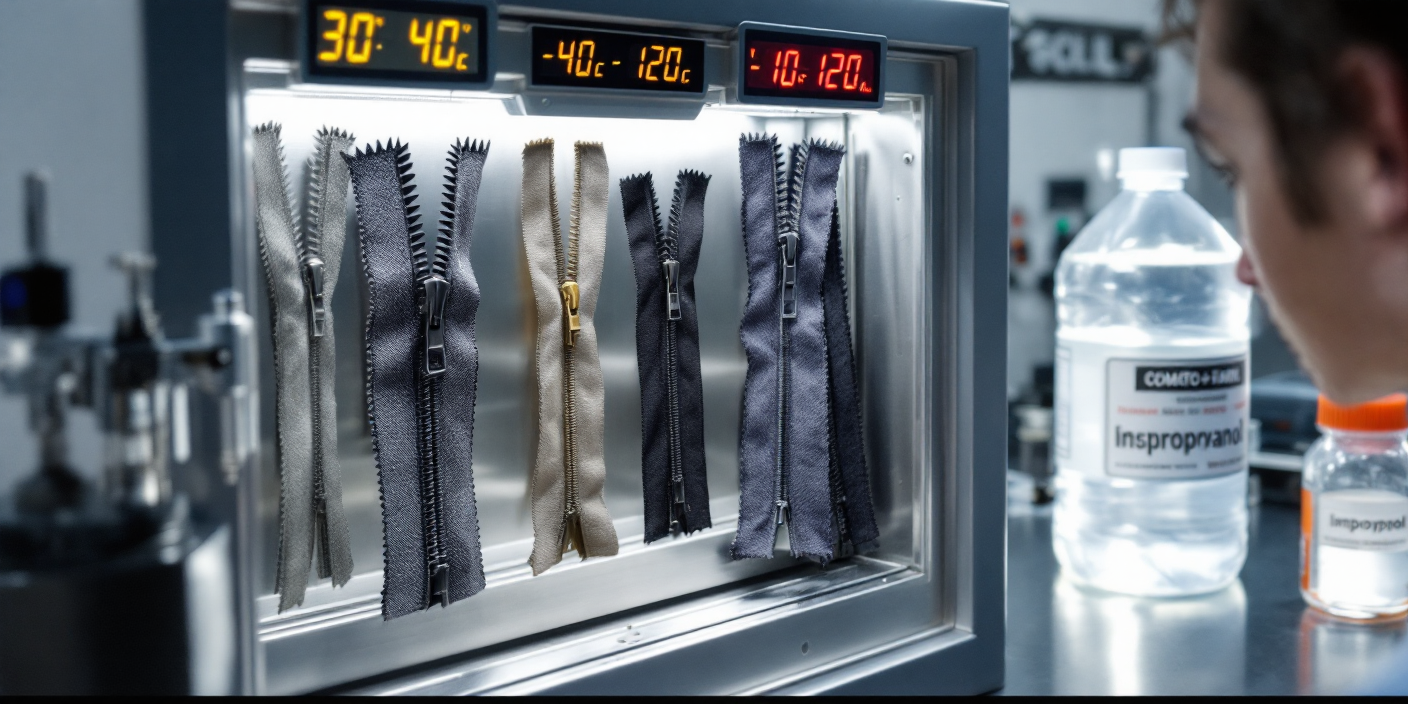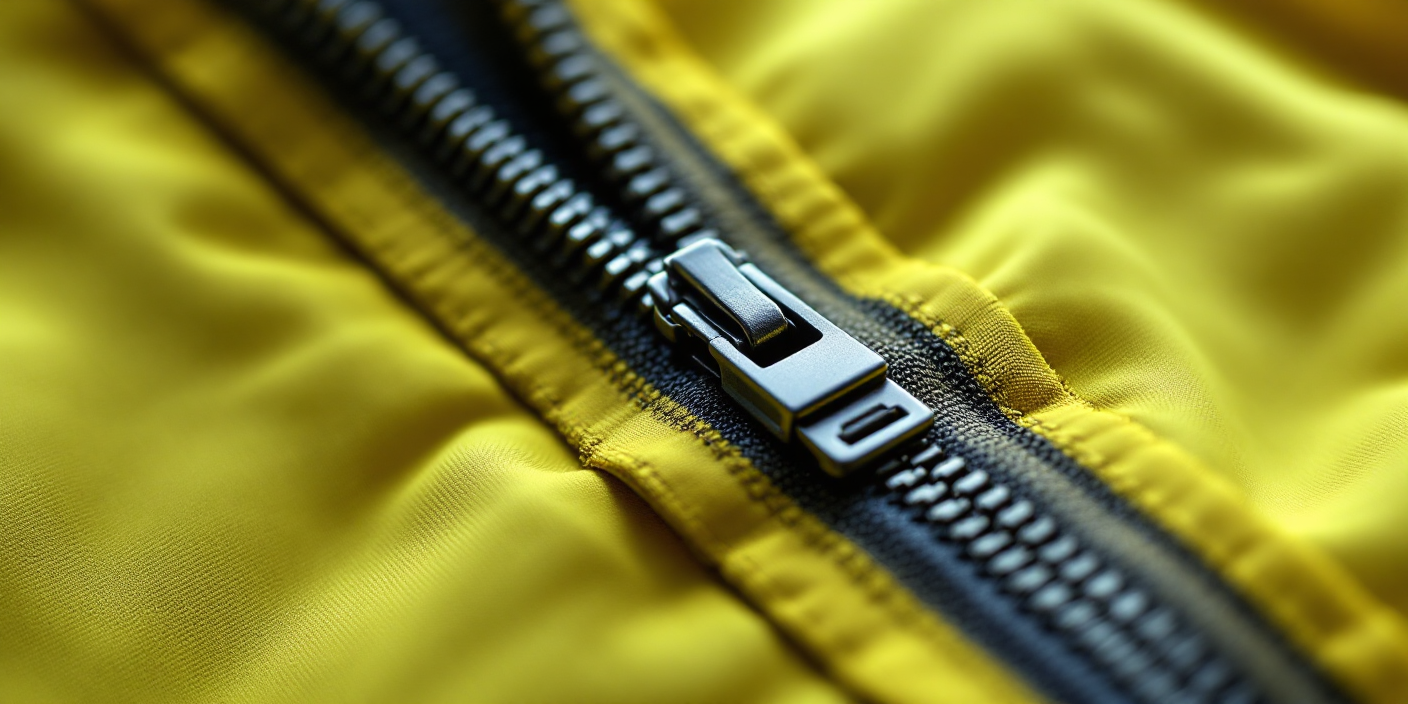When a diver descends into frigid water at depth, or a hazmat responder seals into a chemical protective suit, the zipper is not an afterthought—it is a critical component of the protection system. In technical apparel for dry suits, hazmat/chemical suits, and pressurized protective garments, zipper failure means exposure. The difference between a water-resistant closure and a true airtight seal can determine whether the garment protects or compromises the wearer.
Lenzip engineers sealed, durable, and ergonomic zippers specifically for OEM partners who manufacture dive/watersports gear, CBRN protective equipment, industrial safety apparel, and lab protective clothing. This is not about making a zipper waterproof—it’s about delivering predictable sealing performance under pressure, maintaining seal integrity after chemical contact and sterilization cycles, flexing reliably at sub-zero temperatures, and surviving thousands of don/doff cycles without tape cracking or element jamming.

Choosing the Right Seal for Technical Garments
The first step in specifying a zipper for protective apparel is establishing the required seal level. Over-specification adds unnecessary cost and stiffness; under-specification compromises safety. For validation methods and acceptance bands, see zipper testing standards and how zippers are tested for strength, corrosion, and fatigue.
Seal levels at a glance
- Water-resistant — Splash/rain protection; no pressure hold. Fastest operation, lowest stiffness.
- Dry — Compression sealing lips form a gasket; typically validated at 50–70 kPa (7–10 PSI) via hydrostatic submersion with zero bubbles over the dwell. Slightly stiffer tape.
- Airtight/pressurized — Gas-tight integrity for CBRN/pressurized garments; high seal reliability, highest rigidity; validated with inflation/soapy-water leak checks and defined acceptance limits.
Dry vs water-resistant vs airtight/pressurized closures
Water-resistant closures rely on tight element geometry and may include storm flaps or tape protection but are not tested to hold standing pressure—appropriate for rain/splash gear where brief exposure is tolerable.
Dry closures use compression sealing lips molded into the tape profile. When the slider closes the chain, sealing surfaces compress to form a continuous gasket. Dry-suit zippers are typically tested around 50–70 kPa (7–10 PSI) hydrostatic. Tapes are TPU/PU on low-wick polyester to minimize substrate ingress.
Airtight and pressurized closures go further for gas-tight integrity (CBRN, pressurized garments). High-performance dive zippers may be validated to ~100 kPa (14.5 PSI); maritime immersion suits often use inflation tests at lower differentials with bubble-free acceptance. Protocols inflate the sealed garment and visually inspect closures and seams.
Gauge/chain selection by garment type and opening length
Gauge and chain type must align with opening length, cross-tension, and don/doff frequency. Full-body front entries often specify #8 or #10 molded-element or coil chains for crosswise strength (tested per ASTM/JIS). Coil constructions offer better bend radius for joints (elbow, hip, shoulder) and reduce bulk near the body. Reference the zipper gauge & chain size chart when right-sizing openings and stop strength.
Materials & Hardware for Comfort and Safety
TPU/PU tapes for sealing and low-wick construction
TPU/PU-coated tapes enable RF welding to coated/laminated garments without stitch perforations. The low-wick polyester substrate resists capillary transport—critical for dry/immersion applications. Sealing lips are co-extruded/laminated; increasing hydrostatic or pneumatic pressure forces lips tighter (pressure-assisted sealing).
For material options and exposure trade-offs, see zipper materials & finishes and zipper coatings & finishes.
Low-profile sliders; glove-friendly pullers; glide band
Sliders are engineered to avoid grinding on sealing lips. Typical glide force bands are 15–55 N, with cold-rated builds maintaining ≤ +20% increase at −20 to −30 °C. Pullers are sized for neoprene/chemical-glove manipulation; self-locking mechanisms prevent back-travel on CBRN/pressurized suits.
Corrosion-safe metals; passivation/anti-seize
Metal components (slider bodies, rivets, stops) use stainless or zinc-free alloys, often passivated to resist pitting/crevice corrosion in saline or chlorinated exposure. For garments requiring repeated sterilization, autoclave compatibility (121 °C, ~103 kPa/15 PSI, 15–20 min) is validated for retention of glide, stop strength, and seal integrity. Use approved lubricants sparingly on docking ends; avoid chemistries that swell elastomers.
Tested for Field Reality
Laboratory tests mirror field use. For method references and acceptance targets, see zipper testing standards.
Cold-flex & thermal cycling
Specimens are conditioned at −20 to −30 °C and flexed at small radii; no tape/lip cracking after 1,000+ cycles; glide remains within ±20% of ambient values. Thermal cycling verifies no delamination or drift through rapid cold-warm transitions.
Abrasion at don/doff zones and high-bend radii
Entry points and cuffs see concentrated wear. Taber/Martindale testing (at garment-realistic radii) rates tapes to high cycle counts before threshold endpoints. Routing/stop placement spreads stress; reinforcement prevents tear-out.
Chemical/sterilization exposure
Chemical resistance follows the adapted EN/ISO permeation principles for tapes/lips. Hazmat builds target breakthrough times aligned to use cases (e.g., strong acids/alkali). Sterilization cycles (steam, peroxide vapor) are validated for seal retention and dimensional stability after multiple runs. For garments facing harsh environments, also see zippers in harsh chemical environments.

Integration of Garment Fabrics
Correct attachment maximizes lifespan and protection. For step-by-step process windows, see integrating zippers into RF-welded or heat-sealed seams and how to read zipper spec sheets.
RF-weld/heat-seal for coated fabrics (peel/shear targets)
RF welding fuses TPU/PU tapes to PVC/TPU/PU substrates. Weld windows (power/time/pressure/cooling) are substrate-specific; typical targets: peel ≥ 8–12 N/25 mm, shear ≥ 10–15 N/25 mm. Hot-air/impulse sealing or adhesive bonding is used where RF isn’t viable (mind-molded stops and heat control).
Stitch + seam-seal strategies for breathable laminates
Breathables (e.g., ePTFE) are stitched with low-wick polyester thread; interior seam tape encapsulates needle holes without impinging on the compression-seal zone. Seam-tape peel must meet/exceed base fabric tear strength.
Stress-relief around stops; curvature planning
Stops distribute loads across multiple layers; reinforcement stitching/welds with radiused patterns prevent propagation. Plan bend radii by gauge/element to avoid puckering or twist along shoulder-to-hip routes.
For selection pitfalls and installation considerations, see choosing the right zipper for your application.
Applications We Support
Dive/dry suits & immersion PPE
Dry-suit zippers validated around 50–100 kPa (7–14.5 PSI) hydrostatic, with TPU tapes for flexibility across shoulders/torso and glove-operable pullers. Immersion suits are validated after folding/compression/UV/saltwater/temperature exposure and inflation leak checks.
Hazmat/chemical suits (CBRN-adjacent interfaces)
Type 3/4 suits (EN 14605) pass jet/spray tests with taped or welded integrations that eliminate stitch paths. CBRN builds integrate airtight seals to respirators/gloves/boots and are validated against decon chemistries and wash cycles. See also why zippers matter in healthcare for adjacent medical requirements.
Pressurized or semi-pressurized protective garments
Positive-pressure suits maintain internal differentials (often 1–3 PSI). Zippers use reinforced lips and are tested for sustained hold without measurable leakage; semi-pressurized builds allow controlled, spec-bound leakage.
Engineering Support, Compliance & Traceability
Each series ships with datasheets (crosswise strength, stop retention, slider pull-off), sealing performance (pressure rating/leak rate), environmental bands (temperature, chemical), and CAD. Glide-force bands document 15–55 N across temperature/lubrication conditions to support ergonomics reviews.
Materials comply with REACH/RoHS, and batch-level Certificates of Conformance include test data and raw-material traceability. We provide documentation packages supporting EN/ASTM/ISO and industry standards, easing regulatory submission.
For related fundamentals, see zipper engineering 101 and how to read zipper spec sheets.
Request a Technical Apparel Spec Match
Share your fabric stack, chemical exposure profile, operating temperature range, opening geometry, and pressure requirements—we’ll return a spec-matched construction (tape/coating, chain size, slider/hardware), weld/sew parameters, and QC targets you can hand to production.
Browse components: custom zippers · sliders · continuous zippers · zipper material options
Next step: request a quote or contact customer support
Frequently Asked Questions
What seal level do we need—water-resistant, dry, or airtight?
Match seal to risk. Water-resistant for splash/rain; dry for immersion (~50–70 kPa / 7–10 PSI hydrostatic); airtight for hazmat/CBRN/pressurized garments with defined leak-rate acceptance. See zipper testing standards.
Can these zippers be RF-welded to our laminate/coating?
Yes for polar thermoplastics (PVC/TPU/PU). We provide weld windows and target peel/shear by substrate. Non-polar fabrics use stitch-and-tape or adhesive bonding. Details in integrating zippers into RF-welded or heat-sealed seams.
How do they perform at low temperatures and after chemical exposure?
Cold-flex to −20 to −30 °C with ≤ +20% glide increase; chemical compatibility validated via exposure/permeation matrices (available per series). See zippers in harsh chemical environments.
What glide force can we expect (with gloves, at cold temps)?
Typical 15–55 N by gauge; cold-rated builds maintain glove-operable forces at −20 to −30 °C with approved lubricants.
How do we service/replace sliders without compromising the seal?
Serviceable from chain ends with correct orientation; follow approved cleaning/lube. Periodic inspections and slider refreshes are recommended for critical PPE.
What documentation/traceability ships with each lot?
Batch CoCs, pressure-hold and mechanical test data, REACH/RoHS statements, and raw-material traceability. Additional certificates available on request.
